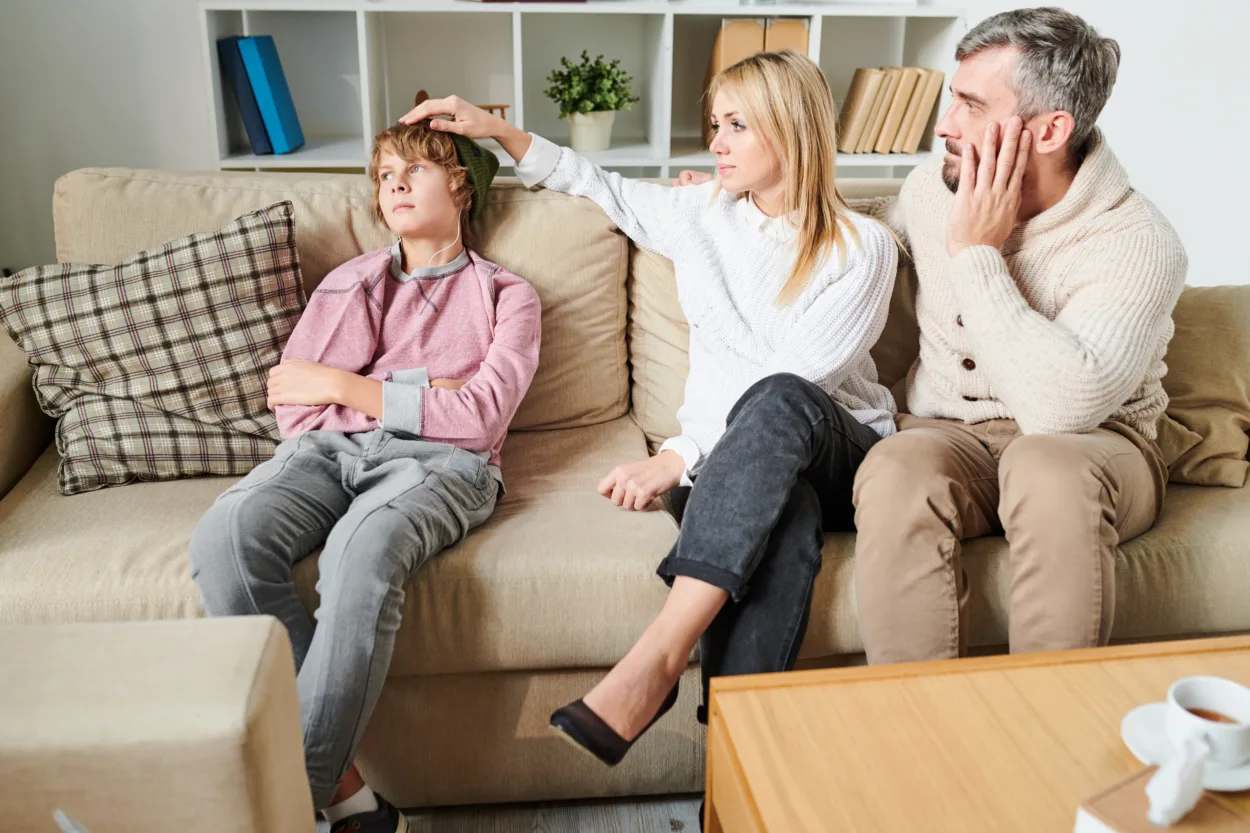
Seasonal affective disorder (SAD) or seasonal depression as it’s most commonly known, doesn’t only affect adults, it can also affect children and teens. As the days get colder and gloomier, you might notice your child becoming colder and gloomier as well.
If that happens, chances are it’s not a coincidence; they are most likely struggling with seasonal depression, even if they don’t recognize it themselves. Children often don’t vocalize what they’re going through, not because they can’t, but more often than not they aren’t exactly sure what they’re going through. They might assume it’s normal and not worth mentioning.
That’s where you come in. Learning about SAD will not only help you better understand this form of depression and potentially be able to recognize it in yourself, but it will enable you to provide a level of support to your child they might not even know they need.
What is seasonal depression?
SAD is a clinical form of depression that arises specifically in the colder months of autumn, winter, and even springtime for some people. In other words, it’s called seasonal depression because it specifically comes and goes with the changing of seasons.
The exact causes of seasonal depression are unknown, but there have been some speculations as to why people experience such a drastic mood and energy change in the colder months.
Some causes might be:
- Lack of Vitamin D (we get it primarily from sunshine) that results in our body not producing as much serotonin, also known as the happy hormone
- Already having depression, a preexisting mental illness, or some other disorder
- Living in regions that are typically more gloomy than sunny
- Shorter days which produce increased levels of melatonin, known as the sleep hormone
Since SAD can last for upwards of half the year — sometimes even more — many people become accustomed to the feeling of being depressed on a day-to-day basis. SAD affects people differently and to different extremes, but regardless, it typically does cause a ripple effect in your relationships and your life overall.
Signs of seasonal depression in children
People who struggle with SAD experience a variety of symptoms, many of which mimic depression quite closely. You might notice your child becoming more withdrawn and reclusive during the colder months; they may spend a lot more time in their room and alone.
Some of the signs of seasonal depression include:
- Sleeping for much longer intervals
- Seeming sluggish and exhausted, despite sleeping more
- Having a lack of interest in people or activities they used to enjoy
- Withdrawing and avoiding social interactions
- Being particularly fussy, aggravated or moody on a consistent basis
- Dramatic loss or gain of weight
- Changes in appetite, specifically increased cravings for sugar or carbs
- Difficulty concentrating, focusing and communicating
You know your child best, probably even more than they do right now, and so you will be able to clearly identify what behaviors in them are abnormal. You’ll know the difference between your child having a rough day — or even a rough week — and something being genuinely different with their behavior.
Different treatments for SAD
Depending on your child’s medical history and the current severity of their SAD symptoms, there are several different standard forms of treatment for seasonal depression.
Talk therapy, or counseling, is a common method of treatment for depression, including seasonal. There may be challenges your child is going through they were able to manage before, but now that they’re struggling with SAD, their challenges have been amplified. Talking it out with a qualified professional in a safe environment might greatly benefit them.
Light exposure is another successful method of treatment for seasonal depression, as its purpose is to remedy any Vitamin D deficiencies your child might be experiencing. Light therapy can range from natural, where they would be “prescribed” to go outside in the daylight to absorb sunshine, to artificial, where they might have sessions under UV lights or you might be recommended to buy a light box, which mimics sunshine exposure.
In some cases, if the depression transcends the seasons and has an underlying chemical imbalance, a medication or prescription may be encouraged. This doesn’t necessarily mean they will be on antidepressants; the prescription very well could be a potent Vitamin D supplement.
The type of treatment your child undergoes is going to be unique to their specific situation, and the doctor may even give you a variety of ways to help your child at home.
Being patient—encouraging your child to go out in the sunshine, spending quality time with them and being an empathetic, judgment-free zone for them to express themselves are all ways you can help remedy their seasonal depression.
Reach out for additional support
If your child is experiencing symptoms that make it difficult for them to complete their typical daily routines and habits, or if the symptoms are starting to affect their relationships, consider reaching out to the team here at The Light Program.
We provide a variety of mental health services for adults and teens alike, and we’ll work closely with you to find a treatment plan that best fits the needs of your child.
To learn more about how we can help your child work through seasonal depression, give us a call today at 610-644-6464.






